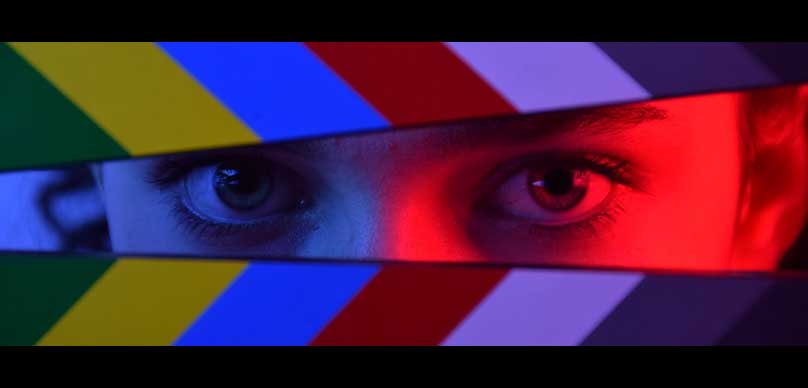An aspect ratio is simply an image’s width and height. As technology in camera advances, some standard ratios have fallen behind, giving way to exciting and new movie ratios. Good movie makers know how to make great choices in picking the aspect ratio to use to give viewers a wonderful viewing experience.
There are six basic aspect ratios made available for cameras today.
Below are the six ratio aspects:
1:1 – This is a square format ratio. This actually doesn’t cover landscape or portrait orientation. Its inherent symmetry can also be used for high formal composition. However, it seems that the non-square rectangles were much more common for taking photos, and the square was not really in use until the arrival of Rollei’s cameras in 1929. Hasselblad also followed suit by introducing their waist level SLR that also uses square format. This format is also commonly seen in smartphone apps. An example is Instagram that currently boasts of over 60 million square format images every single day.
5:4 – These are for sheet film and large format cameras, mainly as 8”x10” and 4”x5”, and this is where the well-known 8”x10” print came from.
4:3 – This aspect ratio is popularly used in videos and broadcast televisions, mainly in 640X480-pixel resolution: small compacts and cameras (that inherited prior CCD video architecture). Thomas Edison used this aspect ratio for one of his films, after then, the ratio as became a standard. People don’t really know why he chose that aspect ratio, but there have been some speculations about it. This is roughly the proportion of a ‘whole plate’ used in tintypes or Daguerreotypes before the arrival of cinema. This format is mainly 6.5”x8.5”, which is approximately 4:3. It is of worth to observe that 3:2 and 4:3 are geometrically related, because if you double or half a 4:3 aspect (in the right dimension) gives a 3:2 aspect, and doubling or halving 3:2 will give you 4:3.
3:2 – This format is the known format for 35mm film, and it’s also digital SLR standard format. Oskar Barnack made a little camera that makes use of cinema film rolls, and he decided to make use of the double frame. A double of 4:3 frame yields 4:6, which is the same thing as 3:2 when it’s turned 90 o. This is where the format for 35mm film originated, and it is currently what is in use today. Japanese camera inventors Minolta and Nikon used a 4:3 aspect format in their very first 35mm film camera, but they later switched to using a 3:2 format.
16:9 – This is the High Definition Television format, it is not used for still digital cameras, but it is used to render quality images for the cinematic view.
2.35/2.40:1 – This is a wide screen motion picture made for feature films, it is not commonly used for still images. And there are no still digital cameras that have this format. Not only is it very wide, but if you want to crop it down to 4:3 format, you will be cutting off almost half of your image.
Most recent cameras offer a variety of photo sizes in-camera, although, what they really do is to crop the bottom and top of the image. There are just a couple of cameras you’ll find that its sensor is bigger than the image circle of the lens. And this allows the diagonal view of an image to be maintained when copying it.
The early stages of filmmaking had a limitation of a 4:3 frame aspect also known as Academy ratio, until in the early 1950s when 16:9 frame aspect was developed. Subsequently, wide screen aspect ratios such as 1.85:1 and 2.35:1 followed suit. With a lot of choices to make, the aspect ratio can be utilized as a subliminal tool in Storytelling of a movie.
Ever since aspect ratios has been evolving continually, but this evolution has more to do with taste instead of technology. The most used aspect ratios for modern movies are 2.39: and 1.85:1, even though moviemakers now have a wide range of aspect ratio to choose from.
However, a lot of movie makers are never satisfied with a single aspect ratio. An example is a movie titled A Serious Man shot by Coen Brothers. This enigmatic prologue was shot in 4:3 frame aspect, but they later switched it to 1.85 for the remaining part of the movie. Also, another great movie that they used more than one aspect ratio is Oz The Great. In this movie, Sami Raimi also changed the aspect ratio at the mid-air of the movie from 4:3 frame aspect to 2.35:1 frame aspect.
When TV was becoming more popular and widespread in the 1950s, they maintained film dimensions that best suits the frame 4:3. But when the wide screen started gaining popularity, a lot of people had issues with it, because when wide screen movies were displayed on a 4:3 frame aspect TV, it did not fit. Movies like Citizen Kane were looking great, but Ben Hur did not fit and was having some big black bars at the bottom and top of the screen.
Finally, late in the 1980s, a shift in thought was in order. And after some stalling, the 16:9 frame aspect was settled upon, as it offered a sensible bargain between the different aspect ratios on offer. Continuously, TV shows got up to speed and began to deliver films to fit a 16:9 screen.
In conclusion, the way movies are portrayed on our screens means a lot. As no one wants to see a movie with an incomplete display of objects. How a movie is displayed, and its quality is one thing that captivates viewers emotions while watching the movie. Therefore, the aspect ratio of every film matters a lot.

